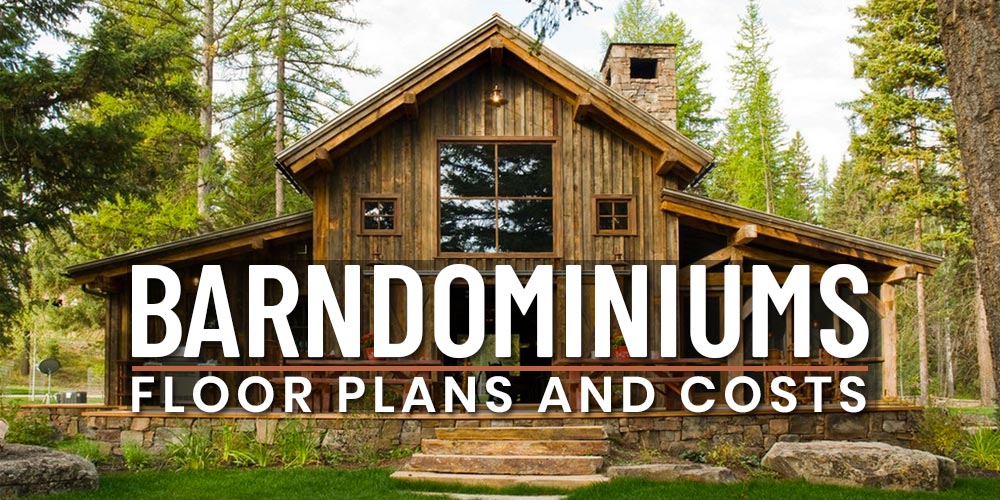Barndominiums Vs. Traditional Homes: a Detailed Contrast of Lifestyle and Functionality
The decision between barndominiums and standard homes encompasses various aspects, including lifestyle choices and useful demands. Barndominiums are defined by their open designs and adaptability, frequently appealing to those that prioritize public living and flexibility.
Introduction of Barndominiums
Barndominiums, an unique housing pattern gaining appeal throughout numerous areas, mix the rustic beauty of barn-style architecture with the functionality of contemporary home. These one-of-a-kind structures generally consist of a metal or wood framework, incorporating open flooring strategies and high ceilings with energy-efficient attributes. Frequently situated on expansive rural residential properties, barndominiums use homeowners the chance to take pleasure in a peaceful lifestyle while providing ample room for various tasks.
The flexibility of barndominiums expands beyond their visual charm; they can work as both living quarters and useful rooms for leisure activities, workshops, or perhaps local business. Their flexible style enables simple modification, accommodating varied family members demands and choices. Several proprietors appreciate the reduced upkeep needs related to metal house siding and roof, contributing to long-term sturdiness.

Attributes of Typical Residences
Highlighting ageless design and convenience, conventional homes are identified by their unique architectural designs, which frequently reflect historic impacts and local appearances. Common attributes consist of symmetrical exteriors, gabled roof coverings, and a focus on craftsmanship, causing a cozy and inviting environment.
Traditional homes often incorporate components such as crown molding, wainscoting, and hardwood flooring, boosting their timeless charm. They usually feature multiple rooms with defined objectives, promoting family members interaction while enabling personal privacy. visit site. The layout frequently includes formal living and eating areas, which contribute to enjoyable guests and hosting family members gatherings
Exterior materials such as block, wood, or rock are regularly made use of, adding to toughness and a feeling of permanence. Barndominium builder. Furthermore, numerous conventional homes are developed with front porches or stoops, cultivating a feeling of neighborhood and link with the community
Landscaping plays a substantial role in typical home style, with well-kept gardens and paths that enhance aesthetic allure - visit site. Generally, standard homes embody a sense of fond memories and stability, interesting those who value heritage and a much more structured living environment
Cost Contrast
Typically, an expense comparison in between barndominiums and standard homes exposes significant differences in construction expenditures and general financial investment. Barndominiums, usually constructed from metal or steel structures, normally incur lower product and labor costs than conventional homes developed from timber and block. The streamlined design of barndominiums can convert to decreased building and construction times, additionally decreasing labor prices and accelerating occupancy.
Generally, the expense per square foot for a barndominium varies from $100 to $150, while traditional homes can differ commonly, typically dropping between $150 and $300 per square foot, relying on place, products, and layout complexity. This cost disparity makes barndominiums an attractive choice for budget-conscious customers seeking larger living areas without compromising top quality.
Furthermore, barndominiums might bring about long-term savings through reduced upkeep expenses, energy effectiveness, and insurance coverage prices. Their resilient building and construction products commonly need less maintenance in time contrasted to traditional homes. It is crucial to take into consideration that while initial expenses may be lower for barndominiums, the last investment will likewise depend on specific customization and preferred features, which can affect the overall expense in both housing kinds.
Way Of Living and Area Considerations
When thinking about way of living and room, barndominiums offer a distinct versatility that charms to a selection of homeowners. These hybrid structures combine domestic living with functional room, usually featuring open floor strategies that can be adjusted to match specific requirements. This flexibility is especially beneficial for households or individuals seeking a customized living atmosphere, enabling diverse usages such as office, workshops, or entertainment locations.

Additionally, the visual charm of barndominiums can satisfy both rustic and modern tastes, making them a versatile selection for different design preferences (Barndominium repair). Inevitably, the option between a barndominium and a traditional home often rests on exactly how well each option aligns with the home owner's way of life desires and spatial demands, highlighting the value of thinking about individual concerns in the decision-making process
Environmental Effect and Sustainability
The ecological impact and sustainability of barndominiums existing compelling advantages contrasted to conventional homes. Largely constructed from steel and various other durable materials, barndominiums are often built making use of recycled sources, minimizing the demand for new materials and minimizing waste. Their design commonly highlights open rooms, which can cause reduced energy intake for heating and air conditioning contrasted to traditional homes with more segmented layouts.
Additionally, barndominiums can integrate sustainable attributes such as photovoltaic panels, rainwater harvesting systems, and advanced insulation methods, enhancing their energy performance. The flexibility of their layout allows house owners to integrate these innovations more perfectly than in lots of typical homes, which might require extensive retrofitting.
Furthermore, barndominiums commonly call for fewer resources for building and construction due to their easier, a lot more effective layouts. This not just lowers the carbon impact related to building yet likewise contributes to an extra lasting lifestyle. In comparison, standard homes may entail higher levels try these out of power expense and resource utilize throughout their lifecycle, from building and construction to upkeep. On the whole, barndominiums represent a forward-thinking method to lasting living, straightening with contemporary environmental concerns.
Verdict
In summary, the choice in between barndominiums and standard homes pivots on individual lifestyle preferences and functional requirements. Barndominiums, with their open layouts and sustainable materials, cater to those seeking flexibility and public living.